Influence of extracellular matrix composition on tumour cell behaviour in a biomimetic in vitro model for hepatocellular carcinoma
- PMID: 36639512
- PMCID: PMC9839216
- DOI: 10.1038/s41598-023-27997-3
Influence of extracellular matrix composition on tumour cell behaviour in a biomimetic in vitro model for hepatocellular carcinoma
Abstract
The tumor micro-environment (TME) of hepatocellular carcinoma (HCC) consists out of cirrhotic liver tissue and is characterized by an extensive deposition of extracellular matrix proteins (ECM). The evolution from a reversible fibrotic state to end-stage of liver disease, namely cirrhosis, is characterized by an increased deposition of ECM, as well as changes in the exact ECM composition, which both contribute to an increased liver stiffness and can alter tumor phenotype. The goal of this study was to assess how changes in matrix composition and stiffness influence tumor behavior. HCC-cell lines were grown in a biomimetic hydrogel model resembling the stiffness and composition of a fibrotic or cirrhotic liver. When HCC-cells were grown in a matrix resembling a cirrhotic liver, they increased proliferation and protein content, compared to those grown in a fibrotic environment. Tumour nodules spontaneously formed outside the gels, which appeared earlier in cirrhotic conditions and were significantly larger compared to those found outside fibrotic gels. These tumor nodules had an increased expression of markers related to epithelial-to-mesenchymal transition (EMT), when comparing cirrhotic to fibrotic gels. HCC-cells grown in cirrhotic gels were also more resistant to doxorubicin compared with those grown in fibrotic gels or in 2D. Therefore, altering ECM composition affects tumor behavior, for instance by increasing pro-metastatic potential, inducing EMT and reducing response to chemotherapy.
© 2023. The Author(s).
Conflict of interest statement
The authors declare no competing interests.
Figures
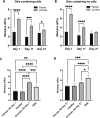
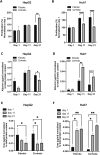
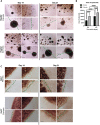
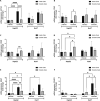
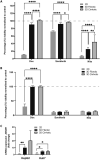

Similar articles
-
Cirrhotic Human Liver Extracellular Matrix 3D Scaffolds Promote Smad-Dependent TGF-β1 Epithelial Mesenchymal Transition.Cells. 2019 Dec 28;9(1):83. doi: 10.3390/cells9010083. Cells. 2019. PMID: 31905709 Free PMC article.
-
A novel three-dimensional culture system maintaining the physiological extracellular matrix of fibrotic model livers accelerates progression of hepatocellular carcinoma cells.Sci Rep. 2017 Aug 29;7(1):9827. doi: 10.1038/s41598-017-09391-y. Sci Rep. 2017. PMID: 28851916 Free PMC article.
-
A Biomimetic Model for Liver Cancer to Study Tumor-Stroma Interactions in a 3D Environment with Tunable Bio-Physical Properties.J Vis Exp. 2020 Aug 7;(162). doi: 10.3791/61606. J Vis Exp. 2020. PMID: 32831309
-
Contributions of Fibroblasts, Extracellular Matrix, Stiffness, and Mechanosensing to Hepatocarcinogenesis.Semin Liver Dis. 2019 Jul;39(3):315-333. doi: 10.1055/s-0039-1685539. Epub 2019 Jun 21. Semin Liver Dis. 2019. PMID: 31226725 Review.
-
Hepatic stellate cells and extracellular matrix in hepatocellular carcinoma: more complicated than ever.Liver Int. 2014 Jul;34(6):834-43. doi: 10.1111/liv.12465. Epub 2014 Feb 12. Liver Int. 2014. PMID: 24397349 Review.
Cited by
-
An Injectable, Shape-Retaining Collagen Hydrogel Cross-linked Using Thiol-Maleimide Click Chemistry for Sealing Corneal Perforations.ACS Appl Mater Interfaces. 2023 Jul 26;15(29):34407-34418. doi: 10.1021/acsami.3c03963. Epub 2023 Jul 12. ACS Appl Mater Interfaces. 2023. PMID: 37435912 Free PMC article.
-
Quantitative imaging of doxorubicin diffusion and cellular uptake in biomimetic gels with human liver tumor cells.Drug Deliv Transl Res. 2024 Apr;14(4):970-983. doi: 10.1007/s13346-023-01445-1. Epub 2023 Oct 12. Drug Deliv Transl Res. 2024. PMID: 37824040 Free PMC article.
-
Challenges and Opportunities for Extracellular Vesicles in Clinical Oncology Therapy.Bioengineering (Basel). 2023 Mar 3;10(3):325. doi: 10.3390/bioengineering10030325. Bioengineering (Basel). 2023. PMID: 36978715 Free PMC article. Review.
-
Targeting cancer-associated fibroblasts/tumor cells cross-talk inhibits intrahepatic cholangiocarcinoma progression via cell-cycle arrest.J Exp Clin Cancer Res. 2024 Oct 17;43(1):286. doi: 10.1186/s13046-024-03210-9. J Exp Clin Cancer Res. 2024. PMID: 39415286 Free PMC article.
-
Unveiling the Role of Mechanical Microenvironment in Hepatocellular Carcinoma: Molecular Mechanisms and Implications for Therapeutic Strategies.Int J Biol Sci. 2024 Sep 30;20(13):5239-5253. doi: 10.7150/ijbs.102706. eCollection 2024. Int J Biol Sci. 2024. PMID: 39430235 Free PMC article. Review.
References
Publication types
MeSH terms
Substances
LinkOut - more resources
Full Text Sources
Medical

